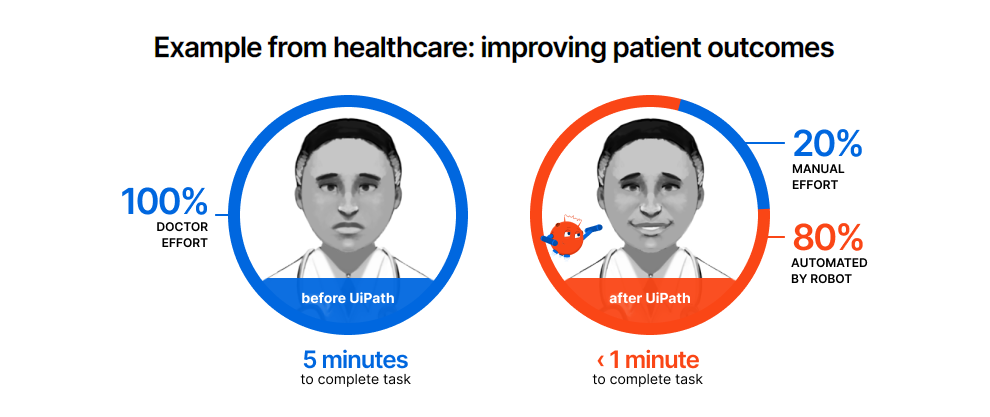Introduction
Have you ever wondered whether Robotic Process Automation (RPA) is a domain that you’d like to pursue? Well, look no further than this article as I have prepared 5 reasons why RPA should more than stir up your enthusiasm. In this article, I will mainly be referring to the UiPath suite of RPA tools.
1. Great learning materials
There are all sorts of RPA courses hiding around the corners of the Internet. However, I have yet to find one that could surpass the ones offered by UiPath themselves. The UiPath Academy provides top-notch and up-to-date classes that are perfectly tailored to match various areas of expertise ranging from, but not exclusive to, business analysis and infrastructure engineering.
In terms of course structure, UiPath has found the perfect balance between theory and practice. To be more specific, the RPA Developer Foundation and Advanced learning paths, which are required to learn the fundamentals of UiPath, consist of a carefully assembled blend of videos, text and interactive UI elements. These are topped off by the practical section which gives you the task of building an application by applying everything that you have learned.
As a general recommendation, trying to complete the practical section by yourself is highly encouraged, no matter the amount of time that you spend on it. Taking your time to comprehend how the different elements of UiPath Studio come together will be a very good way for you to actually speed things up.
2. Reduced complexity/Intuitive IDE
An amazing feature deeply ingrained within the whole RPA paradigm is the fact that the tools which are accessible to every developer have deeply intuitive IDEs and present low- to no-code approaches, UiPath Studio is the only low-code platform available on the market that offers a more robust approach towards automating processes.
UiPath Studio can offer a developer an easy drag and drop, low-code experience which, at times, can make them feel like a one-man army of coders. It is based on the .NET framework and allows the use of either VB or C#. Prior experience with the aforementioned programming languages and IDE is not necessary, though it is strongly endorsed; in the learning phase, many features will be familiar if you’re already comfortable with one of these programming languages.
The UiPath Studio platform also allows source control integration using GIT, TFS, FSTS, VSTS, and SVN, without having to use command lines, through only the click of one button.
Given the reduced level of complexity that UiPath Studio offers, I’d think the ideal candidate would be someone with a fairly limited background in computer science, who wants to learn and is excited about RPA. That said, developers of all kinds are more than welcome to try out everything RPA has to offer, including UiPath Studio.
3. Industry prospects
Another amazing feature linked to RPA is the potential of the industry. Gartner classified RPA as the fastest growing corporate software category; in the next 2 years, 72% of organizations will work with RPA. According to Deloitte, in the next five years, almost all companies will have adopted RPA technology in some way, which signifies that RPA will reach universal adoption by 2023.
As companies increasingly realize the many benefits of automation, the need for RPA developers will continue to rise worldwide. While expectations may differ, a handful of best practices remain essential to the viability of the code and managing the long-term cost of automation ownership.
4. Development satisfaction
Working with UiPath Studio can make any developer’s dopamine receptors tingle. Instead of having to labor away to write numerous methods, you can simply drag and drop them and configure them accordingly using variables, arguments and activity settings. The pleasure gained from coding can be described as similar to HTML webpage writing, where every line of code contains an immediate visual response resulting in a small dopamine incrementation.
It is also a well-known fact that working remotely in software development is a more than viable option, and it is no different in the domain of RPA. The same thing can be said about the salaries offered in the domain–RPA developers are compensated as well as standard software developers due to the pristine character of the domain and its associated demand.
5. Potential impact on the world
Through the inherent characteristics of RPA, this technology has the potential to change everything we have known about office work and make it less cumbersome to the average employee. By freeing up the time spent by employees doing menial, repetitive tasks, we can now rest assured that more energy is directed towards tasks that actually matter and bring more value to individual companies.
The very notion that RPA is efficient only in certain industries is entirely false. Automatable tasks exist in every industry and as long as they are repetitive, rules-based and of high volume, they can be considered a great fit for RPA business processes. Furthermore, thanks to the implicitly uncomplicated nature of RPA, UiPath has developed a no-code tool called “UiPath Studio X” which allows even the most technologically illiterate employee to easily automate tasks.
In similitude with the Industrial Revolution which can be considered to be the first wave of automations in the history of mankind, RPA can definitely reach a matching level of impact as software pervades every aspect of contemporary society and will continue to expand further into more and more complex solutions which will, in turn, be automatable.
Robotic Process Automation is definitely a fast-growing domain that’s very much accessible to both technical and non-technical persons and which, nevertheless, provides a deep level of impact upon society.


